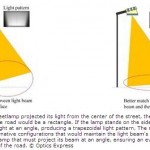
The airplane design, called D-series “double bubble”, could be an alternative to the Boeing 737 class aircraft currently employed for domestic flights.
The body of the concept airplane is composed of two partial cylinders that are placed side-by-side, creating a wider structure compared with conventional designs. The concept aircraft got its name from the fuselage whose cross-section resembles the contours of two soap bubbles joined together.
The plane’s engines are repositioned from the conventional wing-mounted positions to the rear end of the fuselage where they take in relatively slower moving air. This technique, called boundary layer ingestion, allows the engines to generate the same amount of thrust while consuming less fuel.
The new design, however, results in more engine stress. To mitigate this, the plane would travel approximately 10 percent slower than a Boeing 737. The aircraft design further features thinner wings and a smaller tail to reduce drag.
Mark Drela, Professor of Fluid Dynamics at the institute and lead designer of the D-series, said the little changes amount to one big change – a 70 percent increase in fuel economy and a 75 percent decrease in nitrogen oxide emissions. The researchers also say that the design reduces noise while allowing the plane to lift off from shorter runways.
Carl Burleson, Director of the Federal Aviation Agency’s Environment and Energy Office, says the bubble design makes the D-series engine airplane feasible because it is relatively easier to incorporate into existing airport infrastructure.
This design is one of two models that the M.I.T.-led team submitted to the National Aeronautics and Space Administration (NASA) as part of a $2.1 million research contract to develop new concepts for NASA aeronautics over the next two decades.
The second design features an aircraft that could be built with conventional aluminum using current jet technology and but would consume 50 percent less fuel than conventional models.
Six teams were chosen to take part in the NASA program in 2008, including Boeing, G.E. Aviation, and Northrop Grumman. The M.I.T.’s own task was to develop designs for commercial planes which travel slower than the speed of sound. Boeing, with Lockheed-Martin, would create designs for commercial planes which travel faster than the speed of sound.
The NASA program aims to identify critical technologies that will allow for widespread operation green airplanes by 2035.
EcoSeed News Release dated May 19, 2010














